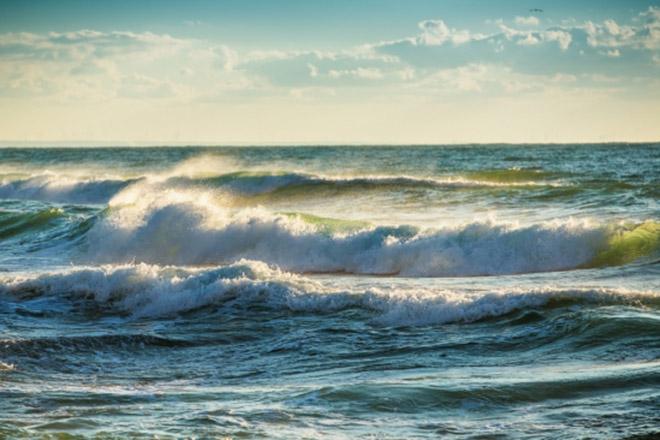Decoding ocean signals
by Julie Cohen on 9 Feb 2017

Why the ocean has absorbed more carbon over the past decade IStock .com
Geographer Tim DeVries and colleagues determine why the ocean has absorbed more carbon over the past decade. With the ocean absorbing more carbon dioxide (CO2) over the past decade, less of the greenhouse gas is reaching the Earth’s atmosphere. That’s decidedly good news, but it comes with a catch: Rising levels of CO2 in the ocean promote acidification, which breaks down the calcium carbonate shells of some marine organisms.
The cause of this recent increase in oceanic CO2 uptake, which has implications for climate change, has been a mystery. But new research from UC Santa Barbara geographer Timothy DeVries and colleagues demonstrates that a slowdown of the ocean’s overturning circulation is the likely catalyst. Their findings appear in the journal Nature.
“Such a slowdown is consistent with the projected effects of anthropogenic climate change, where warming and freshening of the surface ocean from melting ice caps leads to weaker overturning circulation,” DeVries explained. “But over the time periods we studied, it’s not possible to say whether the slowdown is related to natural climate variability or to climate change caused by human activity.”
DeVries and fellow researchers Mark Holzer of the University of New South Wales in Sydney and François Primeau of UC Irvine compiled existing oceanographic tracer data — measurements of temperature, salinity, CFCs (manmade gases that dissolve into the ocean) and carbon-14 — and separated it into three decade-long time periods: the 1980s, the 1990s and the 2000s.
Subsequent computer analysis of that data enabled the researchers to characterize ocean circulation — the transfer of water from the surface to the deep ocean and back again — for each time period. They then analyzed ocean-atmosphere carbon exchange and ocean carbon cycling within their circulation model.
“As the circulation changed from decade to decade — 1980s to 1990s to 2000s — the model predicted a big dip in oceanic CO2 uptake during the 1990s, then a large increase in uptake during the 2000s,” DeVries explained. “Furthermore, these swings were attributed directly to the changes in ocean circulation.”
According to DeVries, this finding may seem counterintuitive. Prevailing scientific wisdom asserts that the deceleration of circulation diminishes the ocean’s ability to absorb anthropogenic CO2 from the atmosphere as surface waters warm and become saturated with CO2.
“While that is true, there is another effect that appears to be more important in the short term,” DeVries said. “The weaker overturning circulation brings less naturally CO2-rich deep waters to the surface, which limits how much of that gas in the deep ocean escapes to the atmosphere. That causes the ocean to absorb more CO2 from the atmosphere.”
For more information visit
website.
If you want to link to this article then please use this URL: www.sailworldcruising.com/151655